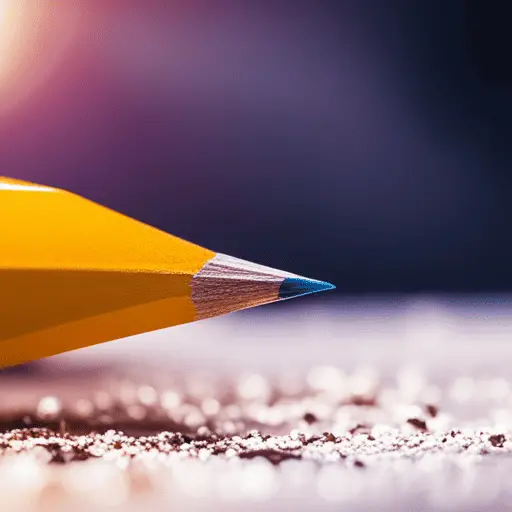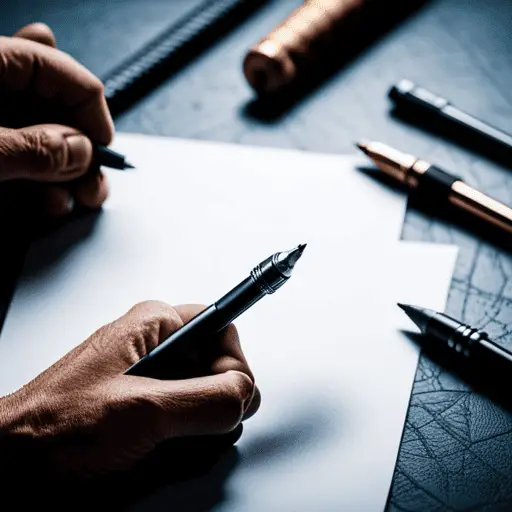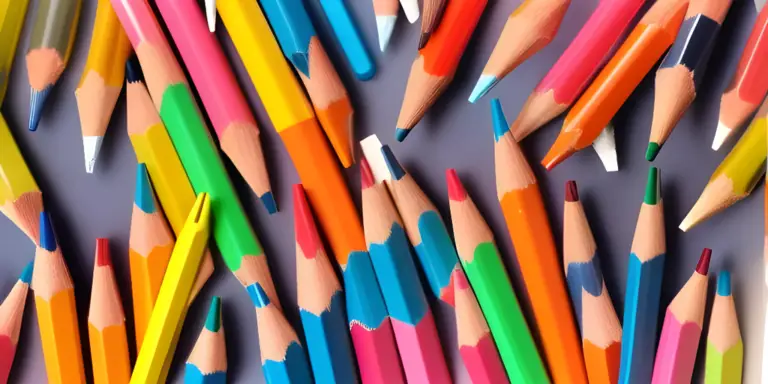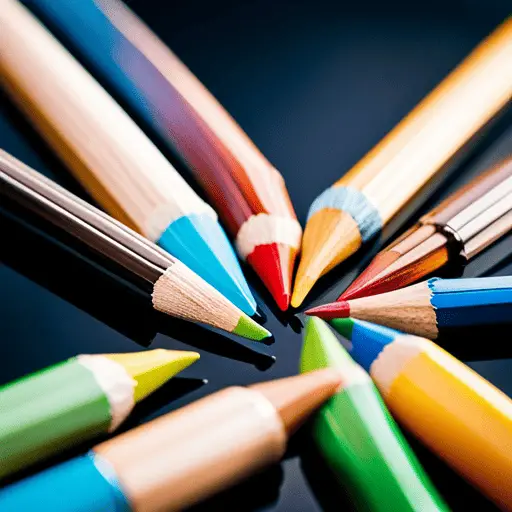Fine Point vs Thick: Understanding Pencil Lead Types
Are you tired of using the same old pencil and not getting the desired results? Do you want to enhance your artistic skills or improve your handwriting? Understanding the different types of pencil lead can make all the difference in your work.
This article will explore the differences between fine points and thick leads and how to choose the right one for your project. Pencil lead is made up of graphite and clay. The ratio of these materials determines the hardness or softness of the lead.
Fine-point leads are typically harder and produce a lighter, more precise line. Thick leads, on the other hand, are softer and produce a darker, more expressive line. Understanding the differences between these two types of lead can help you achieve your desired result, whether a detailed drawing or bold lettering.
So, let’s dive in and explore the world of pencil lead.
Key Takeaways
- Pencil lead hardness affects the darkness of the mark on paper, and the ratio of graphite to clay determines this hardness.
- Fine-point leads are ideal for precise writing and detailed work, while thick leads are better for creating bold lines and shading.
- Choosing the right pencil lead for a project depends on hardness, color, paper type, and desired effect.
- Proper care for pencil lead includes sharpening techniques and avoiding breakage to keep it in top condition.
Understanding the Basics of Pencil Lead

Let’s start by getting a grip on the basics of pencil lead. Pencil lead comes in different hardness levels, usually indicated by a number or letter. The higher the number or letter, the harder the lead. The hardness of the lead affects how light or dark the mark it makes on paper is.
A harder lead, such as an H or 2H, will produce lighter marks, while a softer lead, such as a B or 2B, will create darker marks. Aside from hardness, pencil lead also varies in composition.
Traditional pencil lead is made from a mixture of graphite and clay, but other materials such as charcoal, carbon, and even colored pigments can also be used. These different compositions can affect the color and texture of the marks made by the pencil.
Now that we understand pencil lead, let’s dive deeper into fine point leads.
Fine Point Leads

There’s nothing quite like a sharp pencil tip’s smooth and precise feel when it comes to writing or drawing with a pencil. Fine-point leads are perfect for those who want to achieve writing precision and fine details.
Here are four things you need to know about fine point leads:
- Fine-point leads are typically harder than thick leads, which means they hold their point longer and are less likely to break.
- They’re ideal for technical drawing, sketching, and writing small letters and notes.
- Fine point leads come in a range of hardness levels, from H to 9H, with H being the softest and 9H being the hardest.
- The harder the lead, the lighter the line it creates, making it perfect for intricate and delicate work.
You can achieve the precision and detail you need with the right fine-point lead. But what if you want to create bold lines and shading? Let’s explore thick leads.
Thick Leads
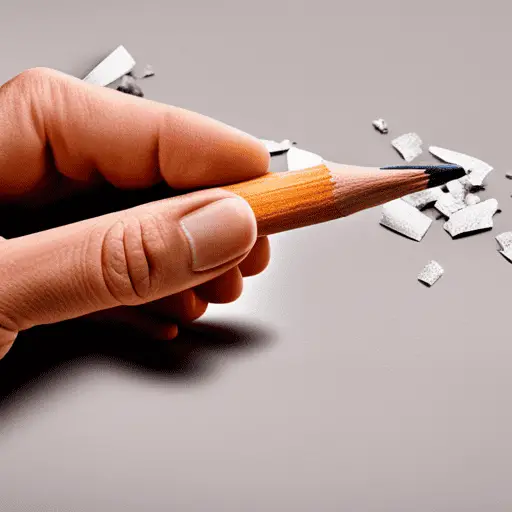
You’ll feel the satisfying weight of the pencil in your hand as you switch to a thick lead, allowing you to create bold lines and shading easily. Thick leads are perfect for sketching out large areas quickly and covering large surfaces with a solid color. The advantage of using a thicker lead is that it produces more pronounced and visible lines, making it easy to create depth and dimension in your drawings.
You’ll need a sharpener with a larger hole to sharpen thick leads. Electric sharpeners are a great option, but if you don’t have one, you can use a handheld sharpener designed for thicker leads. Be careful not to sharpen too much, as this can cause the lead to break or become too short to hold comfortably. With the right tools and technique, you can create stunning works of art with thick leads that showcase your creativity and talent.
Now that you know the advantages of using a thick lead and how to sharpen it, you can confidently choose the right lead for your project. Whether you’re working on a large drawing or need to add depth and dimension to your sketches, a thick lead is a great choice for any artist looking to push the boundaries of their creativity.
Choosing the Right Lead for Your Project

As an artist, choosing the right tool for your project is like selecting the perfect brush for a painting.
When it comes to pencil lead, it’s important to consider the lead’s hardness and the color options available.
Harder leads, such as those labeled H or 2H, is great for precise lines and details, while softer leads, like those labeled B or 2B, are better for shading and blending.
In addition to hardness, you can also choose from various lead colors, such as black, gray, brown, and even colored leads. These can add a unique touch to your artwork, allowing for creativity.
When choosing the right lead for your project, consider the type of paper you’ll use and the effect you want to achieve. You can create stunning works of art with the right lead and technique.
Transitioning into the next section, caring for your pencil lead is important to keep it in top condition.
Caring for Your Pencil Lead
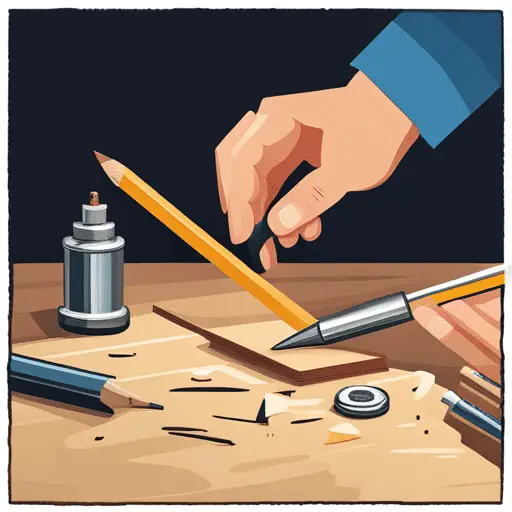
To ensure your pencil lead stays in top condition, it’s essential to take proper care of it. One way to do this is by using the right sharpening technique. Avoid using mechanical or electric sharpeners as they can cause the lead to break easily. Instead, use a hand-held sharpener with a sharp blade. Hold the pencil firmly and sharpen it slowly, rotating it evenly to create a sharp point.
Another way to care for your pencil lead is to avoid breakage. This can be done by storing your pencils in a case or holder to prevent them from rolling off your desk or getting crushed in your bag. Also, avoid applying too much pressure when writing or drawing, as this can cause the lead to snap.
By taking these simple steps, you can ensure that your pencil lead will last longer and produce high-quality results every time.
Frequently Asked Questions
Conclusion
So, there you have it! You better understand the different types of pencil leads available and how to choose the right one for your project. Whether you prefer the precision of a fine-point lead or the boldness of a thick lead, it’s important to consider the type of work you’ll be doing and the effect you want to achieve.
Remember, taking care of your pencil lead is crucial for maintaining quality and ensuring your work looks its best. Keep your pencils sharp and clean, and store them properly to avoid breakage.
In conclusion, the world of pencil lead is vast and varied, but you can easily navigate it with this knowledge. So go forth, armed with your newfound understanding, and create something beautiful! And as they say, ‘the pen is mightier than the sword’, or in this case, the pencil!


